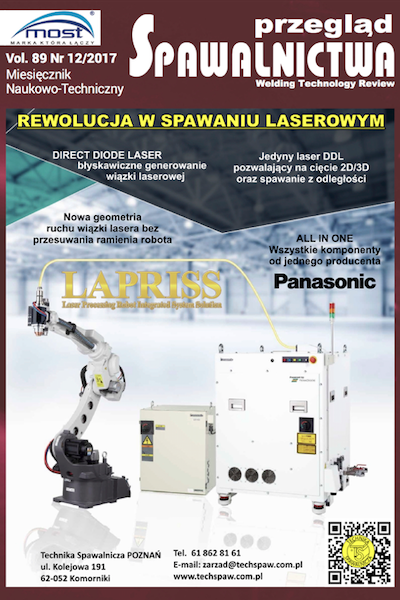The ultrasonic testing of full axles
Main Article Content
Abstract
A very important issue from exploration point of view of railway axles is ultrasound research. The aim of the per- formed examination is to discover the transverse fatigue cracks. They are most often formed near the axis diameter changes (in areas of stress concentration). The traditional ultrasound technique allows to perform testing by using the angle heads for longitudinal waves from the front surface of the spigot. Examination of full axes is a time-consuming task. The solution for this type of research is semi-automatic examination. It is much more cheaper than fully automatic one and it is faster than the examination performed manually. The ultra- sound research is developing dynamically, there are a lot of modern techniques like for example Phased Array technique. Using one head provides the ability to scan at multiple angles of the ultrasonic beam and there is no need to use multiple heads.
Downloads
Article Details
Creative Commons CC BY 4.0 https://creativecommons.org/licenses/by/4.0/
Welding Technology Review (WTR) articles are published open access under a CC BY licence (Creative Commons Attribution 4.0 International licence). The CC BY licence is the most open licence available and considered the industry 'gold standard' for open access; it is also preferred by many funders. This licence allows readers to copy and redistribute the material in any medium or format, and to alter, transform, or build upon the material, including for commercial use, providing the original author is credited.
References
Ładecki B.: Problemy związane z wykrywaniem pęknięć zmęczeniowych osi kolejowych, Przegląd Spawalnictwa 11/2014, s. 28-34.
Antolik Ł.: Metodyka wykrywania pęknięć zmęczeniowych w osiach kolejowych a wymagania norm europejskich, Problemy Kolejnictwa zeszyt 165 12/2014, s. 7-19.
Miklaszewicz I.: Prezentacja Badanie nieniszczące i ich odpowiedzialność a bezpieczeństwo transportu szynowego badania ultradźwiękowe elementów kolejowych, Instytut Kolejnictwa, Warszawa 04/2014.
Szelążek J.: Wykrywanie pęknięć osi kolejowych metodą ultradźwiękową, XX Seminarium Nieniszczące Badania Materiałów, Zakopane 12-14 Marca 2014.
Hottowy G.: Materiały własne rma Ekstplast.
Machała P., Uchroński P.: Materiały własne rma ULTRA Wrocław.
Kaczmarek K.: Prezentacja, Nowoczesne techniki badań ultradźwiękowych oraz ich zastosowanie, Gliwice 2017.
Antolik Ł.: Kierunki rozwoju badań ultradźwiękowych na przykładzie badania osi kolejowych, Problemy Kolejnictwa zeszyt 163/2014, s. 7-24.
Miś R.: Materiały własne rma Olympus.
